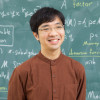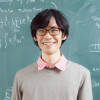iTHEMS Math Seminar
110 events
-
Seminar
How to understand Earth science system using data science
February 25 (Fri) 16:00 - 18:00, 2022
Kaman Kong (Postdoctoral Researcher, Computational Climate Science Research Team, RIKEN Center for Computational Science (R-CCS))
Hi everyone, my name is Kaman Kong. After I graduated from Nagoya University last April, I joined the computational climate science research team, R-CCS at Kobe. Although I have still not yet had the important results now, I would like to share my idea and future plan here. In this talk, different from the previous seminar, I would like to highlight how to use data science approaches to understand our Earth system science. In the first 60 minutes, I would like to share my research experiences in ecosystems, dust outbreaks, and atmospheric sciences and try to discuss their limitation in my study. After a 10-minute break, the 30 minutes will be spent discussing the potential methodology to overcome these limitations and new opportunities and challenges in Earth system science. (Part 1) In the first 60 minutes, I would like to talk about the relationships among ecosystems, dust outbreaks, and atmospheric conditions. I used the models of dust and ecosystem to explore seasonal variations of threshold wind speed, an index of soil susceptibility to dust outbreak, and its relations with land surface conditions, such as plant growth and soil moisture and temperature changes, in the Mongolian grasslands. On the other side, I am improving the weather forecast model to accurately predict dust emission and discuss its effects on the Earth system. Meanwhile, I am integrating the dust model into the ecosystem model. During this period, I realized there are many uncertainties of simulation. (Part 2) In the second 30 minutes, I will explain these limitations as I mentioned before and try to discuss how to solve these problems. For example, using deep learning to identify the green and brown plants separately for discussing their different effect on the dust model. And, used data assimilation (e.g., EnKF and Bayesian calibration) to improve the simulated performance of land surface parameters (e.g., soil moisture and vegetation).
Venue: via Zoom
Event Official Language: English
-
Seminar
Recent progress on dualities in W-superalgebras
January 28 (Fri) 16:00 - 18:00, 2022
Shigenori Nakatsuka (JSPS Fellow, Kavli Institute for the Physics and Mathematics of the Universe (Kavli IPMU), The University of Tokyo)
Vertex superalgebras are algebras which describe the chiral part of two dimensional superconformal field theory. A rich and fundamental class is provided by the affine vertex superalgebras associated with simple Lie superalgebras and the W-superalgebras obtained from them by cohomology parametrized by nilpotent orbits. Historically, the W-algebras associated with simple Lie algebras and principal nilpotent orbit have been studied intensively and are well-known to play an essential role in the quantum geometric Langlands program. In particular, they enjoy a duality, called the Feigin-Frenkel duality, which is a chiral analogue of the isomorphism between centers of the enveloping algebras of simple Lie algebras in Langlands duality. Recently, physicists found a suitable generalization for other types of nilpotent orbits from study on four dimensional supersymmetric gauge theory. In this talk, I will report the recent progress on our understanding of dualities in W-superalgebras since then in terms of several aspects: algebras, modules, and fusion rules.
Venue: via Zoom
Event Official Language: English
-
Seminar
The Ohsawa-Takegoshi $L^2$ extension theorem and variations of Bergman kernels
January 14 (Fri) 16:00 - 18:00, 2022
Genki Hosono (Mathematical Institute, Graduate School of Science, Tohoku University)
In complex analysis and geometry, $L^2$ methods are very important and widely used. Recent studies show that the $L^2$ theory and the variational theory are closely related. In particular, the (optimal) $L^2$ extension theorem can be proved by subharmonicity of variations of Bergman kernels and vice versa. In this talk, I will explain the background, results, and key ideas of the proof. *Please contact Keita Mikami mailing address to get access to the Zoom meeting room.
Venue: via Zoom
Event Official Language: English
-
Seminar

Generalized Bernoulli process and computation of proportional areas for Venn diagram
December 8 (Wed) 16:00 - 18:00, 2021
Ryosuke Iritani (Research Scientist, RIKEN Interdisciplinary Theoretical and Mathematical Sciences Program (iTHEMS))
*For detailed information about the seminar, please refer to the email.
Venue: via Zoom
Event Official Language: English
-
Seminar
The Conley index of topological dynamical systems
December 3 (Fri) 16:00 - 18:00, 2021
Yosuke Morita (Assistant Professor, Department of Mathematics, Kyoto University)
The study of topological dynamical systems, i.e. continuous self-homeomorphisms (or continuous flows) on topological spaces, is important in both pure mathematics and applications. To each isolated invariant subset of a topological dynamical system, we can assign an invariant called the Conley index, which is (roughly speaking) a based space that describes the dynamics around the isolated invariant subset. It is used not only in the study of topological dynamical systems themselves but also in Manolescu’s construction of the Seiberg-Witten-Floer homotopy type (a spectrum-valued (3+1)-dimensional TQFT). In this talk, I am planning to explain a new construction of Conley indices, which is entirely non-homotopical and uses only basic general topology. *Please contact Keita Mikami or Hiroyasu Miyazaki's mailing address to get access to the Zoom meeting room.
Venue: via Zoom
Event Official Language: English
-
Seminar
Self-adjointness from quantum-classical correspondence
November 26 (Fri) 16:00 - 18:00, 2021
Koichi Taira (Assistant Professor, College of Science and Engineering Department of Mathematical Sciences, Ritsumeikan University)
Self-adjointness is a fundamental property of a linear operator in quantum mechanics. In physics, a self-adjoint operator is usually defined to be an operator which is own adjoint. However, this definition is in fact not satisfactory since a self-adjoint operator in this definition does not always have nice properties such as the spectral decomposition. Hence, in mathematics, a kind of completeness is also assumed in the definition of a self-adjoint operator. Here a natural question is how to judge whether an operator is self-adjoint. It has been believed that self-adjointness is closely related to completeness of the classical dynamics for a long time although a complete description of such relations has not been given so far. I am planning to talk about how self-adjointness is important in mathematical physics. Moreover, I will explain relations between self-adjointness and classical dynamics by introducing some examples. *Please contact Keita Mikami or Hiroyasu Miyazaki's mailing address to get access to the Zoom meeting room.
Venue: via Zoom
Event Official Language: English
-
Seminar
The graph removal lemma
November 19 (Fri) 16:00 - 18:00, 2021
Shinichiro Seki (Assistant Professor, Aoyama Gakuin University)
We have recently proved an extension of the Green-Tao theorem on arithmetic progressions to number fields, in collaboration with Kai, Mimura, Munemasa and Yoshino. (Kai gave a talk on this result in March.) There are several promising approaches in this area, including ergodic theory and Fourier analysis, but we used a combinatorial tool, the relative hypergraph removal lemma proved by Conlon, Fox and Zhao. In the first half of this talk, I will give a survey of Szemerédi's regularity lemma and the graph removal lemma, and explain how to extend the removal lemma to the case of (weighted) hypergraphs. In the second half of this talk, I will present Fox's result on a quantitative version of the graph removal, and discuss the prospects for future research. *Please contact Keita Mikami's mail address to get access to the Zoom meeting room.
Venue: via Zoom
Event Official Language: English
-
Seminar
Confluence for the K-theoretic J-function
November 12 (Fri) 16:00 - 18:00, 2021
Todor Milanov (Associate Professor, Kavli Institute for the Physics and Mathematics of the Universe (Kavli IPMU), The University of Tokyo)
I am planning to talk about my recent paper (1) written in collaboration with Alexis Roquefeuil. In the first part of the talk I would like to explain the background of our project: quantum differential equations and K-theoretic quantum q-difference equations in genus-0 Gromov--Witten theory. In the second part of the talk, I would like to explain our main result with an interesting application. Namely, under the assumption that the first Chern class of the tangent bundle is positive, we proved that the small J-function in quantum cohomology can be obtained as a limit q -->1 of the small J-function in quantum K-theory. In the case of a Fano toric manifold of Picard rank 2, we proved the K-theoretic version of an identity due to Iritani that relates the I-function of the toric manifold and the oscillatory integral of the toric mirror. In particular, our confluence result yields a new proof of Iritani's identity in the case of a Fano toric manifold of Picard rank 2. *Please contact Keita Mikami's mail address to get access to the Zoom meeting room.
Venue: via Zoom
Event Official Language: English
-
Seminar
Geometry and Physics of Mirror Symmetry
November 5 (Fri) 16:00 - 18:00, 2021
Naichung Conan Leung (Professor of Mathematics, Department of Mathematics, The Institute of Mathematical Sciences, The Chinese University of Hong Kong, Hong Kong)
In the first half of this talk, I will describe the geometry and physics behind mirror symmetry in layman's terms. In the second half of this talk, I will provide a more mathematical explanation of the concepts involved in this mysterious conjecture. *Please contact Keita Mikami's mail address to get access to the Zoom meeting room.
Venue: via Zoom
Event Official Language: English
-
Seminar
Geometry of hyperkahler 4 manifolds
October 22 (Fri) 13:00 - 15:00, 2021
Song Sun (Associate Professor, Department of Mathematics, University of California, Berkeley, USA)
An n dimensional Riemannian metric g defines a holonomy group, which is a subgroup of SO(n) given by parallel transport along all contractible loops (with respect to the Levi-Civita connection). According to the Berger classification we know that if a complete Riemannian metric is not locally symmetric and not locally reducible then its holonomy group is either the entire SO(n) (generic case), or U(n) (Kahler), or is special and belongs to a small list. Riemannian metrics with special holonomy are very interesting geometric objects to study, with many connections to analysis and physics. The simplest model is given by a 4 dimensional hyperkahler metric. We will explain the general background and discuss recent progress on understanding the geometry of hyperkahler 4 manifolds. *Please contact Keita Mikami's mail address to get access to the Zoom meeting room.
Venue: via Zoom
Event Official Language: English
-
Seminar
The branched deformations of special Lagrangian submanifolds
October 15 (Fri) 10:00 - 12:00, 2021
Siqi He (Research Assistant Professor, Simons Center for Geometry and Physics, Stony Brook University, USA)
Special Lagrangian submanifolds are a distinguished class of real calibrated submanifolds defined in a Calabi-Yau manifold, which are calibrated by the real part of the holomorphic volume form. Given a compact, smooth special Lagrangian submanifold, Mclean proved that the space of nearby special Lagrangian submanifolds of it could be parametrized by the harmonic 1-forms. In this talk, we will discuss some recent progress on generalizing Mclean’s result to the branched deformations. We will describe how to use multi-valued harmonic functions to construct branched nearby deformations. In the first one hour, we will introduce the background of special Lagrangian submanifold and explain the motivations to study this problem. In this second one hour, we will discuss the technical details and interesting new phenomenon in this branching deformation problem. *Please contact Keita Mikami's mail address to get access to the Zoom meeting room.
Venue: via Zoom
Event Official Language: English
-
Seminar
Geography of varieties of general type
October 8 (Fri) 16:00 - 18:10, 2021
Chen Jiang (Associate Professor, Shanghai Math Center, Fudan University, China)
We study birational invariants in order to study birational classifications of varieties. Geography is the study of relations among different invariants. We will focus on two fundamental invariants: canonical volume and geometric genus. For surfaces there are classical results such as Miyaoka-Yau inequality and Noether inequality. I will discuss higher dimensional analogue of them, and introduce our recent work on the optimal Noehter inequality for 3-folds joint with Jungkai Chen and Meng Chen. *Please contact Keita Mikami's mail address to get access to the Zoom meeting room.
Venue: via Zoom
Event Official Language: English
-
Seminar
Donaldson-Thomas invariants, wall-crossing and categorifications
October 1 (Fri) 16:00 - 18:10, 2021
Yukinobu Toda (Professor, Kavli Institute for the Physics and Mathematics of the Universe (Kavli IPMU), The University of Tokyo)
It is an important subject to study algebraic curves inside algebraic varieties, both in classical algebraic geometry and also enumerative geometry inspired by string theory. The Donaldson-Thomas theory is one of curve counting theories on Calabi-Yau 3-folds, and has developed in these 20 years from several aspects of mathematics and mathematical physics. Among them, the wall-crossing in derived category turned out to be a key phenomena in proving deep structures of generating series of Donaldson-Thomas invariants. In the first one hour, I will review the classical aspect of counting curves inside algebraic varieties, and explain how it leads to modern enumerative geometry such as Gromov-Witten invariants, Donaldson-Thomas invariants. In the second one hour, I will explain wall-crossing phenomena in Donaldson-Thomas theory, and its categorification in the case of the resolved conifold. *Please contact Keita Mikami's mail address to get access to the Zoom meeting room.
Venue: via Zoom
Event Official Language: English
-
Seminar

From Yang-Mills theory to enumerative geometry on Calabi-Yau 4-folds
August 6 (Fri) 16:00 - 18:10, 2021
Yalong Cao (Research Scientist, RIKEN Interdisciplinary Theoretical and Mathematical Sciences Program (iTHEMS))
Yang-Mills theory was studied from mathematical perspectives in the 1970s by Atiyah and his collaborators (notably Drinfeld, Hitchin, Singer). Subsequent breakthroughs were made on dimensions 3 and 4 by Floer and Donaldson (based on deep analytic results obtained by Uhlenbeck and Taubes) in the 1980s. In 1996, Donaldson and Thomas proposed to study Yang-Mills theories on dimensions bigger than 4. In higher dimensions, the analytic method is limited and algebro-geometric method is heavily used instead. This powerful tool usually enables us to compute partition functions and lead to amazing links to other invariants in enumerative geometry, e.g. Gromov-Witten and Gopakumar-Vafa invariants. In this talk, I will review some of these inspiring stories and discuss how my works on Calabi-Yau 4-folds fit into them.
Venue: via Zoom
Event Official Language: English
-
Seminar

An introduction to modular functions, conformal field theories, and moonshine phenomena
July 2 (Fri) 16:00 - 18:10, 2021
Mizuki Oikawa (Junior Research Associate, RIKEN Interdisciplinary Theoretical and Mathematical Sciences Program (iTHEMS) / Student Trainee, RIKEN Interdisciplinary Theoretical and Mathematical Sciences Program (iTHEMS) / Ph.D. Student, Graduate School of Mathematical Sciences, The University of Tokyo)
Moonshine phenomena are certain mysterious connections between modular functions and finite groups. The first example is the celebrated monstrous moonshine, which connects the J-invariant and the Monster group. Surprisingly, this relationship can be well understood in terms of chiral conformal field theory. In this talk, I would like to explain what is chiral conformal field theory and how it gives moonshine phenomena. In the first part of the talk, the notion of modular function will be introduced and the precise statement of the monstrous moonshine will be given. Then the monstrous moonshine will be explained in terms of vertex operator algebra, a mathematical model of chiral conformal field theory. In the second part of the talk, we focus on the question: what is chiral conformal field theory mathematically? In addition to vertex operator algebras, other mathematical models of chiral conformal field theory, namely conformal nets and Segal conformal field theories, will be introduced. Recent progress on the relationship among these three models, including the Carpi--Kawahigashi--Longo--Weiner correspondence and the geometric realization of conformal nets will also be reviewed.
Venue: via Zoom
Event Official Language: English
-
Seminar

Stable eigenvalues of compact anti-de Sitter 3-manifolds
June 18 (Fri) 16:00 - 18:10, 2021
Kazuki Kannaka (Special Postdoctoral Researcher, RIKEN Interdisciplinary Theoretical and Mathematical Sciences Program (iTHEMS))
Geometric objects that have been investigated in detail so far, such as closed Riemann surfaces, are sometimes locally homogeneous. Loosely speaking, their infinitesimal behavior is the same at each point. In this talk, I would like to explain the idea of investigating such objects using the Lie group theory.In the first part of the talk, I will recall the notions of Lie group actions and their quotient spaces with examples, and then explain the definitions of locally homogeneous spaces and their deformations (Teichmüller spaces). In the second part of the talk, I will consider anti-de Sitter manifolds as a special case, i.e., Lorentzian manifolds of negative constant curvature. As in the Riemannian case, a differential operator called the Laplacian (or the Klein-Gordon operator) is defined on Lorentzian manifolds. Unlike the Riemannian case, it is no longer an elliptic differential operator but a hyperbolic differential operator. In its spectral analysis, new phenomena different from those in the Riemannian case have been discovered in recent years, following pioneering works by Toshiyuki Kobayashi and Fanny Kassel. I would like to explain stable eigenvalues of the hyperbolic Laplacian of anti-de Sitter 3-manifolds with recent progress.
Venue: via Zoom
Event Official Language: English
-
Seminar

Loewner's theorem for maps on operator domains / The structure of maps on the space of all quantum pure states that preserve a fixed quantum angle
May 24 (Mon) 16:00 - 18:10, 2021
Michiya Mori (Special Postdoctoral Researcher, RIKEN Interdisciplinary Theoretical and Mathematical Sciences Program (iTHEMS))
This talk is divided into two independent topics. In the first part of my talk we consider the order structure of hermitian matrices. Given two matrix domains (open connected sets of n-by-n hermitian matrices), what is the general form of order isomorphisms between them? I will explain that there is a complete correspondence between the class of order isomorphisms and that of biholomorphic mappings. In the second part we consider the metric structure of the space P(H) of all quantum pure states (= the projective space of a complex Hilbert space H). Wigner's theorem asserts that every surjective isometry of P(H) onto itself is implemented by a unitary or an antiunitary operator. Uhlhorn generalized Wigner's theorem by showing that every bijective transformation of P(H) that preserves orthogonality is implemented by a unitary or an antiunitary operator. We consider some variants of Uhlhorn's result. The first part is joint work with P. Semrl (Univ. of Ljubljana), and the second part with G.P. Geher (Univ. of Reading). Only basic linear algebra is assumed in both parts.
Venue: via Zoom
Event Official Language: English
-
Seminar

Geometry of canonical metrics on Kähler manifolds
May 14 (Fri) 16:00 - 18:10, 2021
Eiji Inoue (Special Postdoctoral Researcher, RIKEN Interdisciplinary Theoretical and Mathematical Sciences Program (iTHEMS))
The aim of this talk is to report recent trends in Kähler geometry. Kähler geometry consists of two aspects: the one is algebraic geometry and the other is metric geometry.The first one hour is an introduction for non-mathematicians. I begin with a simple example of algebraic variety from ancient Greek, which I believe is the simplest example illustrating motivation for compact complex manifolds. On the other hand, I explain the first motivation for canonical metrics in Kähler geometry via Riemann’s uniformization theorem.The last one hour is an introduction to recent trends in Kähler geometry, especially Kähler-Einstein metrics. The existence of Kähler-Einstein metrics turns out to be related to geometry of degenerations of space, which is so called Yau-Tian-Donaldson conjecture. I explain various aspects of this topic. We encounter deep studies in metric geometry, birational geometry and non-archimedean geometry. I finally explain recent breakthrough on Kähler-Ricci flow.The goal of this talk is the starting point of my study. I briefly explain my study if time permits.
Venue: via Zoom
Event Official Language: English
-
Seminar
Alternative tsunami observing and forecasting systems
April 22 (Thu) 16:00 - 18:10, 2021
Iyan Mulia (Research Scientist, Prediction Science Laboratory, RIKEN Cluster for Pioneering Research (CPR))
Dedicated tsunami observing systems are mostly expensive and are often not sustainable. Therefore, alternative approaches should be implemented to overcome the issues. We introduced innovative ways to observe tsunamis using existing instrumentation available on unconventional platforms such as commercial vessels and airplanes. Our study demonstrated that the accuracy of the proposed observing systems is adequate for detecting large tsunamis offshore. The use of such systems is expected to provide more cost-effective and sustainable observations for the future. Additionally, we also developed a tsunami forecasting system based on machine learning to improve or complement the conventional methods that typically require considerable computational resources. On the contrary, the main appealing feature of the machine learning is the computational speed that would be suitable for a real-time prediction of tsunami inundation or flooding. We found that the application of machine learning can significantly improve the computing time without sacrificing the accuracy compared to the conventional methods.
Venue: via Zoom
Event Official Language: English
110 events
Events
Categories
series
- iTHEMS Colloquium
- MACS Colloquium
- iTHEMS Seminar
- iTHEMS Math Seminar
- DMWG Seminar
- iTHEMS Biology Seminar
- iTHEMS Theoretical Physics Seminar
- Information Theory Seminar
- Quantum Matter Seminar
- ABBL-iTHEMS Joint Astro Seminar
- Math-Phys Seminar
- Quantum Gravity Gatherings
- RIKEN Quantum Seminar
- Quantum Computation SG Seminar
- Asymptotics in Astrophysics Seminar
- NEW WG Seminar
- GW-EOS WG Seminar
- DEEP-IN Seminar
- ComSHeL Seminar
- Lab-Theory Standing Talks
- Math & Computer Seminar
- GWX-EOS Seminar
- Quantum Foundation Seminar
- Data Assimilation and Machine Learning
- Cosmology Group Seminar
- Social Behavior Seminar
- QFT-core Seminar
- STAMP Seminar
- QuCoIn Seminar
- Number Theory Seminar
- Berkeley-iTHEMS Seminar
- iTHEMS-RNC Meson Science Lab. Joint Seminar
- Academic-Industrial Innovation Lecture
- RIKEN Quantum Lecture
- Theory of Operator Algebras
- iTHEMS Intensive Course-Evolution of Cooperation
- Introduction to Public-Key Cryptography
- Knot Theory
- iTHES Theoretical Science Colloquium
- SUURI-COOL Seminar
- iTHES Seminar
